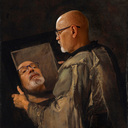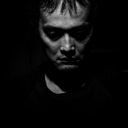1 Like
Novocherkassk: the capital of the Cossacks. Rostov region
Novocherkassk cannot boast a long history, but is ready to compete with a sharp take-off and exciting turns of events. On its quiet streets, ancient buildings have been preserved, and the magnificent cathedral is the third largest in Russia.
A Brief History of Novocherkassk
The city was founded in 1805 as the capital of the Don Don Region. Prior to this, the main city of the Don Cossacks was Cherkassk (now the village of Starocherkasskaya). Why did you decide to move the capital? Every spring, Don flooded, flooding Cherkassk, so there was a need to find a safe place. In addition, the city did not have a clear layout, which provoked frequent fires.
Ataman Matvey Platov turned to Emperor Alexander I with a request to transfer the capital, and received a positive response. In 1805, the first stone of Novocherkassk was laid, construction work began a few years later, they were entrusted to the leading engineer of that time - Lieutenant General Franz Pavlovich Devollan, who already had considerable experience in designing European cities. Devollan, together with Platov, found a new place, which was located on a hill between the Tuzlov River and the tributary of the Don Aksay.
The urban plan was designed in European traditions. Wide avenues were too spacious for the end of the 19th century. Streets diverged from the central squares, with towering temples. This arrangement was not only modern, but also convenient from a defensive point of view - the guns can be moved in a circle.
On May 18, 1805, the solemn laying of the new capital of the Don Cossacks and the military church took place. The ceremony was attended by more than thirty villages, plowed out streets and avenues, laid a blackboard with a gilded coat of arms of the Don Army, and gold and silver coins minted in 1805 at the base of the temple.
A year later, he moved to Novocherkassk, Old Cherkassk resigned and transferred the rights to the new capital. But the Cossacks reluctantly left their homes and did not want to move away from the Don.
Initially, Novocherkassk played the role of a military center; later, industrial enterprises and factories began to be erected. However, the city remembers its military past.
After the revolution of 1917 and during the Civil War, Novocherkassk supported the white movement and became a haven for opponents of the Bolshevik government.
Under the leadership of Ataman Alexei Maksimovich Kaledin, an independent Don region was created with its capital in Novocherkassk. Later, a Volunteer Army was formed here to fight the Bolsheviks. During the war, Novocherkassk passed to the Bolsheviks, then to the White Guards. And in 1920 it finally became a Bolshevik city, having lost the status of the capital of the Don Cossacks.
During the Great Patriotic War in 1942, Novocherkassk was occupied by German troops, and was liberated in 1943. They say that the Nazis, in order not to quarrel with the Cossacks, did not bomb the city. Our troops, when entering Novocherkassk, also did not touch the center. This allowed to preserve historical buildings.
In 1991, Novocherkassk received the status of a historical and modern center of the Don Cossacks, and in 1993 it was proclaimed the capital of the Cossacks.
Modern Novocherkassk is considered a major center of the Rostov region. Time spared the city, leaving the historic center with its old buildings and churches almost untouched.
Sights of Novocherkassk
Ascension Troops Cathedral
The Ascension Troops Cathedral is the main religious building in Novocherkassk and the third largest in Russia, after the Cathedral of Christ the Savior in Moscow and St. Isaac's Cathedral in St. Petersburg. It is located in Yermak Square.
The first church on this site was founded in 1805, but in 1846 it partially collapsed. In 1863, the restored cathedral again failed, and only in 1893 the temple acquired its present form according to the project of the architect A. A. Yaschenko. In the Soviet years, the church was closed and sacked. But during the German occupation in 1942, services resumed.
The Ascension Cathedral is made in the New Byzantine style, it strikes with monumentality and grandeur. The floor is tiled with marble slabs, the walls are painted with the faces of the saints and the apostle. Because of the radiance of the golden domes and the cross, the Cossacks called the cathedral "the second sun of the Don." The remains of Matvey Ivanovich Platov, Vasily Vasilievich Orlov-Denisov and Yakov Petrovich Baklanov are buried in the lower church.
Yermak Square
Ermak Square or Cathedral Square is considered the heart of Novocherkassk. Despite the fact that the Ascension Cathedral dominates here, it is worth lingering to consider other sights of the city.
The giant sculpture depicts the ataman Ermak Timofeevich.
It was erected by the sculptor V.A. Beklemishev, designed by M.O. Mikeshin, in 1904.
The German occupiers and Soviet authorities tried to dismantle the monument, but could not even move it.
Ermak Timofeevich is considered a Russian explorer and conqueror of Siberia. He has nothing to do with Novocherkassk, since he lived much earlier than the foundation of the city, but was awarded high honor and eternal memory for belonging to the Cossacks and for his services to the fatherland.
The red tower towering next to the cathedral tells that the temple from the very beginning had its own power station and boiler room. It was warm in winter, and the spacious rooms were lit by electric light.
On the other side of the temple is a monument to Reconciliation and Concord. He depicts a Cossack mother with her son, a budennovka and a cap symbolize the fratricidal war, which divided the Cossacks into red and white. The sculpture group was established in 2005.
Also on the square is a monument to General Yakov Petrovich Baklanov, a Russian general and a hero of the Caucasian War. Baklanov was distinguished by courage and courage, was repeatedly awarded with insignia and orders. The two-meter giant masterfully controlled the saber and easily chopped the enemy from head to waist. In recent years, Baklanov lived in St. Petersburg, where he died in poverty in 1873. There, in the northern city, he was buried at the expense of the Don Cossack army, and in 1911 the remains of Baklanov were solemnly transferred to Novocherkassk.
Platovsky Prospect is the central highway of Novocherkassk. It is named after Ataman Matvey Platov, the founder of the city. Historically, the avenue starts from the Ascension Cathedral, from which it stretches for three and a half kilometers with a wide strip. Along the avenue there are many ancient buildings and attractions of the city, we will dwell on some of them. It is worth noting that all significant historical and architectural monuments are marked with signs for the convenience of tourists.
We are met by a small sculpture of Matvey Platov on a horse, beyond which the avenue stretches, although it would be more correct to call it a boulevard.
The long white building overlooking the square and the avenue is the House of Officers, once there were lush balls, and strings of carriages came from all over Novocherkassk. The main entrance looked at the avenue, but now it is laid.
The theological seminary with a brick facade was built in 1883 according to the project of A.A. Yashchenko.
The green-blue two-story building at number 64 is the house of Platov. It was built at the beginning of the XIX century. In Novocherkassk, the Platov family owned three plots of land, but the construction of houses progressed very slowly, and they lived in a suburban estate in Mishkin. The last owner of the house was the granddaughter of the great chieftain Marfa Ivanovna Platova. In 1861, she sold the house to the artist Login Khristianovich Fricke, who lived here until his death in 1893.
The yellow building with columns, made in the style of classicism, is a former military guardhouse (68, Platovsky pr.). It was built in 1856. In past times, in the dark, the guardhouse was lit by bright light, and the changing of the guard took place with special pomp, accompanied by a military band.
Nearby is the Museum of the History of the Don Cossacks, which is definitely worth a visit for a detailed acquaintance with its rich collection.
A little further are the Komissarzhevskaya theater and the city house of culture. The theater often hosts performances on a Cossack theme, and in the city house of culture Cossack rituals are held - wedding, dedication and others.
On the other side of the avenue, in a high-rise building of the Soviet era, there is a city government, and a little further there is a monument to Matvey Ivanovich Platov, which we will discuss later.
Going further, on the left side we will see the Azov Market, named after the Azov Cossack Seat in 1641. Among the shopping arcades is the Mikhailo-Arkhangelsk Church, built in 1870.
The Museum of the History of the Don Cossacks is located on the corner of Ataman Street and Platovsky Prospekt. It occupies two floors and is one of a kind. A rich collection dedicated to the Cossacks is stored in its walls, a local history section is also open and there is a collection of paintings by local artists.
Novocherkassk - 360 aerial panorama of the city of Novocherkassk. View over the Patriarchal Resurrection Cathedral - Square, Yermak Avenue, Red Descent, Platovsky. Tuzlov River. Don steppe
...





Just in case you mistakenly heard that it was all ice and snow in Russia, take a peek at the Big Bikini Exposition. This is right on the river Moskva in Moscow!Moscow has been the capital of Russia for almost its entire history. The exception is during the period of the Russian Empire, which lasted from 1721 until the Russian Revolution 1917. For these two centuries the capital was St. Petersburg. The Russian Empire was the second largest contiguous Empire in world memory; only the Mongol Empire had been greater.Check out what's happening north of Mongolia these days, in ChitaAlthough you may not have heard of Sochi, on the Black Sea, they're building up quickly and hope to host the 2014 Olympics.Other periods of Russian history include the Tsardom of Russia, from Ivan IV to Peter the Great, and the Grand Duchy (14th-16th centuries).The earliest period of Russian history was ruled by the Novgorod Republic and Kievan Rus, which was the first Russian state dating back to 800AD in Kiev.Modern Russia remains one of the world's superpowers. They launched the earth's second satellite, called Sputnik 1, and were the first country to put a human being into orbit around earth. (The first one is called the Moon.)After the breakup of the Soviet Union in 1991, Russia became a federal republic of 83 states.Text by Steve Smith.